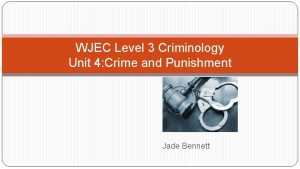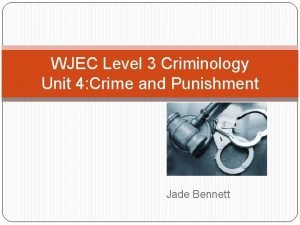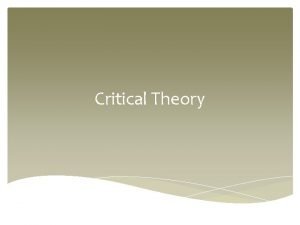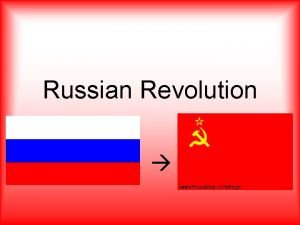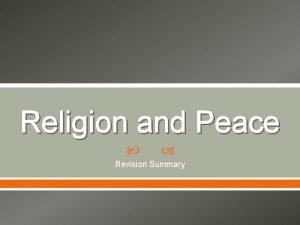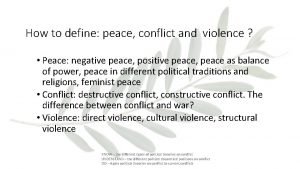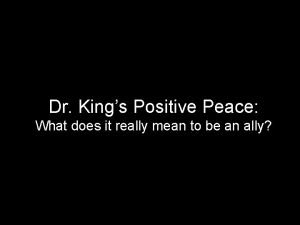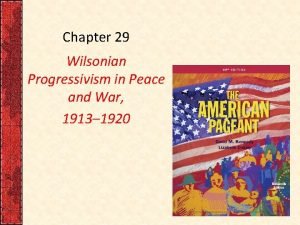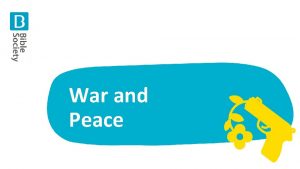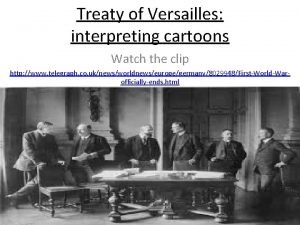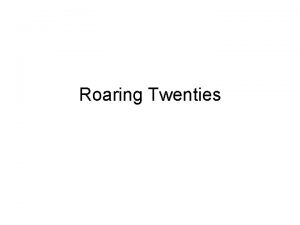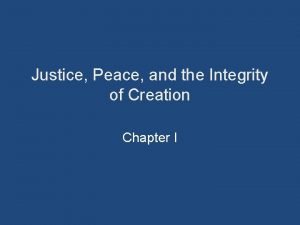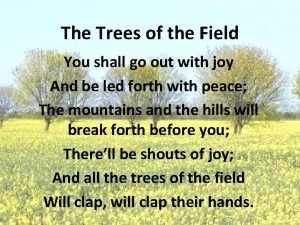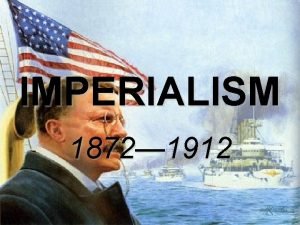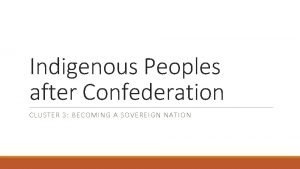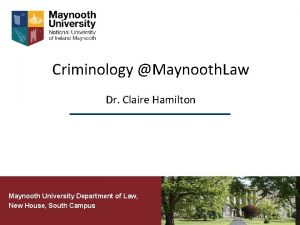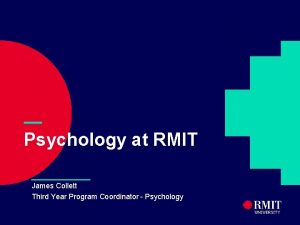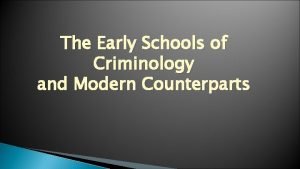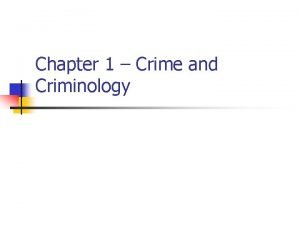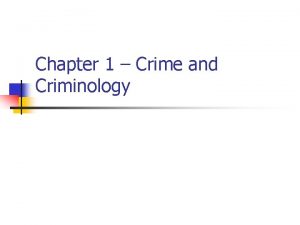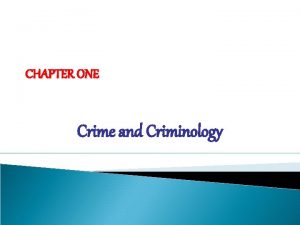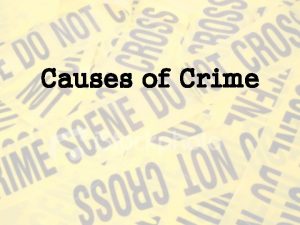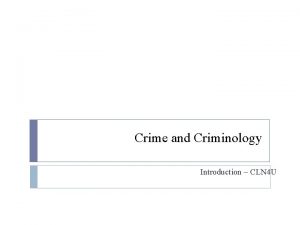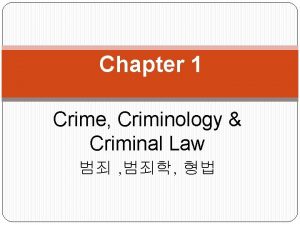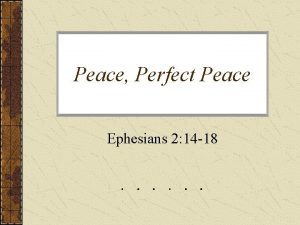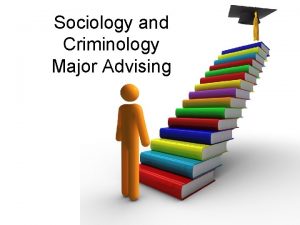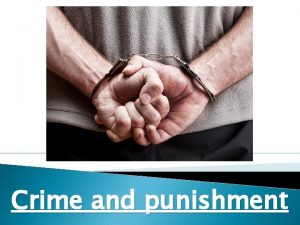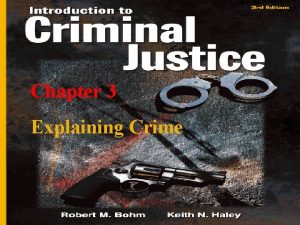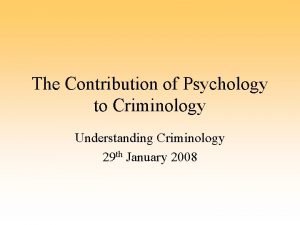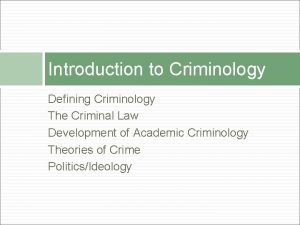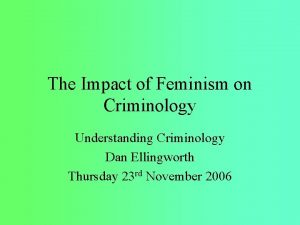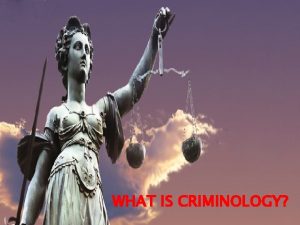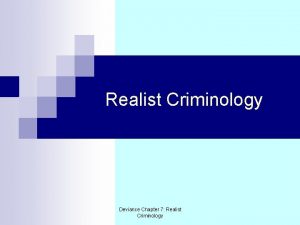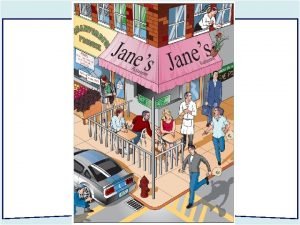CRITICAL CRIMINOLOGY POWER PEACE AND CRIME Critical Criminology













































- Slides: 45

CRITICAL CRIMINOLOGY: POWER, PEACE, AND CRIME

Critical Criminology • Came into prominence in the late 1960 s and early 1970 s • These criminologists lived through the social turmoil of the 1960 s • Vietnam, Kent State, Attica, Watergate, etc. • Realized inequality was deeply entrenched and those in power wished to reinforce, and not change, the status quo • Argued traditional theories are intellectually sterile and dangerous • Ignored and left unchallenged the powerful interests that benefited from this inequality • Also called conflict, radical, and Marxian criminology

Central Themes of Critical Criminology • Concepts of inequality and power are integral to understanding crime • Building off the work of Karl Marx, critical criminology notes that capitalism enriches some and impoverishes many • Produces a wide economic gap • The state operates to legitimatize and protect social arrangements that benefit those profiting from capitalism

Central Themes of Critical Criminology • Crime is “political” • What is and is not outlawed reflects the power structure in society • Injurious acts of the poor are defined as crime while injurious acts of the wealthy and powerful are not • Critical criminologists argue crime should be defined as a violation of human rights

Central Themes of Critical Criminology • See the criminal justice system as serving the interests of the capitalist class • Set up to process poor and minority offenders • Ignores rich and corporate offenders • Criminal justice officials break the law as well • Police brutality, receiving pay-offs, etc. • Capitalist class uses power to commit crimes against its own dissident citizens

Central Themes of Critical Criminology • See capitalism as the root cause of criminal behavior • Under capitalism, the human needs of the poor are ignored • The poor face demoralizing living conditions that foster crime by stunting healthy development • Creates fertile environment for crimes by corporations • Pressure for profits, lax state regulation, infrequent application of criminal penalties • Can lead to huge economic losses and violence (e. g. , exposing people to toxins, defective products, etc. )

Central Themes of Critical Criminology • The solution to crime is the creation of a more equitable society • Support humane policies aimed at preventing harm • Engage in political activity advocating a fairer distribution of wealth and power • For many, the goal of this reform effort is a socialist economy combined with a democratic political system sensitive to the needs of all citizens

Capitalism and Crime • Marx and capitalism • Bourgeoisie • Those who own the means of production • Proletariat • Workers who did not own the means of production and have to sell their labor for wages • Capitalism results in the demoralization of the working class • This condition is only alleviated when workers bond together, revolt, and create a socialist class

Bonger: Criminality and Economic Conditions • Willem Bonger was the first to apply Marxist thought to crime • Central thesis: The capitalist mode of production breeds crime • Key proximate cause of criminality is the mental state of egoism • Egoism is rooted in economic relations • Ruthless competition and the exploitation of others in the pursuit of profit • Society based upon exchange isolates individuals by weakening the bond that unites them • The larger social good is ignored; people only think of their own interests even to the detriment of others • The social sentiment of altruism fosters prosocial behavior, but is stifled in a capitalist society

Bonger: Criminality and Economic Conditions • In a capitalist society, the workingman sells his labor only in order to not die of hunger • The capitalists take advantage of this and exploit the workers • The capitalists (bourgeoisie) do not feel morally tied to others and view people as “things” meant to serve them • Capitalists also are opposed to other capitalists in competition with them • Want to injure their competitors • “Bourgeoisie environment”—honesty is only valued as long as it does not interfere with one’s advantage • Can commit crime undetected and have little to fear from the law

Bonger: Criminality and Economic Conditions • The proletariat • Are dependent on the bourgeoisie and live in a subordinate position while feeling poor and deprived • Sell labor to survive, often at a very early age • This leads to the young thinking only of their own interests • They come into contact with people who are bad influences • They become independent when at an age where they need guidance • The above factors can lead to increases in crime

Bonger: Criminality and Economic Conditions • The proletariat • Often live in very poor housing conditions • Has an impact on their criminality • Have to spend much time on the streets and come into contact with antisocial others • Exposed to constant turmoil and conflict • Unemployment is a constant threat so often compete with one another to maintain work • Insecurity in working position is very demoralizing • Often spend wages as soon as they receive them

Bonger: Criminality and Economic Conditions • The lower proletariat • Do not succeed in selling their labor • Very dire poverty • Chronic poverty • Struggles to survive • Proletariat class has self-respect because they know they are needed, while the lower proletariat sees self as a detriment to society

Bonger: Criminality and Economic Conditions • Concludes that economic conditions play an important role in crime • Capitalism weakens social feelings leading to egoism • One group (bourgeoisie) can exploit the other (proletariat) • Capitalism can be blamed for sexual, violent, vengeful, economic, and political crime • To reduce crime, need to replace capitalism with socialism where the means of production are commonly held

Richard Quinney • Richard Quinney postulates in order for a capitalist society to operate, the capitalist class must exploit the labor of the working class • The working class as an exploited class exists as long as labor is required in the productive process • Class conflict typifies the development of capitalism

Richard Quinney Argues the contradictions of capitalism heighten the class struggle and thus increase: • • 1. The need to dominate and repress by the capitalist class 2. The need to accommodate and resist by the classes exploited by capitalism The capitalists commit economic crimes, deny human rights, and use the state to protect their interests and repress the poor

Richard Quinney • When the working class begins to recognize that the state is repressive, crime becomes politically conscious • At an extreme state, this can lead to a revolt • Actions against the state with an attempt to overthrow it

Richard Quinney • To prevent and stop criminal behavior, the only solution is socialism • All oppressed people need to come together and form a mass socialist movement • Crime is a product of the material and spiritual contradictions of capitalism • The socialist struggle requires religious consciousness and class consciousness • The transition is both political and religious

Pathways to Crime • Although Bonger and Quinney’s work sensitized scholars to the processes involved in producing crime, they did not detail the specific factors under capitalism that foster criminal conduct • Elliott Currie and Mark Colvin have attempted to illuminate these mechanisms

Currie: “Crime in a Market Society” • Capitalism is the root cause of crime, especially the high rate of violent crime in the U. S. • Capitalism comes in multiple forms • “Compassionate capitalism”—stresses social solidarity, equity, and community values • Bottom-up approach • Seen in Scandinavia • “Keiretsu capitalism”—paternalistic • Top-down approach • Seen in Japan • “Contingent” or harsh brand capitalism—seen in the U. S. • Leads to socially isolated and economically impoverished minority communities that are highly conducive to crime

Currie: “Crime in a Market Society” • Currie referred to a “market society” • The pursuit of personal economic gain becomes increasingly the dominant organizing principle of social life • Market principles suffuse the whole social fabric (not confined only to the economy) • Argues market societies are Darwinian societies • Offer few “cushions” against the labor market and minimal public provisions of social support • Sees the market economy as an amoral force that robs people of their jobs, fails to care for at-risk kids and families, and acquits the government from doing much about the human costs of inequality

Currie: “Crime in a Market Society” • This market society explains recent upsurges of violence in Russia and China and the long-term high violent crime rates in the U. S. • Identifies seven pathways through which the market economy creates high rates of serious crime in the U. S.

Currie: “Crime in a Market Society” Pathways to crime • Market society breeds violent crime by destroying livelihoods 1. Long-term absence of opportunities for stable and rewarding work breeds alienation, undercuts having a stake in society, and exerts pressure to participate in crime • • Steady work bonds individuals and allows for desistence • Long-term unemployment disrupts family formation and diminishes the capacity for adults to be role models and agents of socialization • Overwork in poorly paid jobs reduces the capacity of parents to provide a nurturing environment • Long-term unemployment breeds illicit enterprises • Market societies seek to cheapen labor (lower wages) and/or eliminate it altogether • Spends very little on job training services

Currie: “Crime in a Market Society” Pathways to crime • 2. The market society has an inherent tendency toward extremes of inequality and material deprivation • Due to the elimination of good work and the resistance of market societies against governmental intervention to offset the inadequacy of labor markets • The U. S. has an extremely wide spread of inequality and high child poverty rates • Evidence for an association between income inequality/poverty and homicide, aggravated assault, and child abuse • Poverty inhibits intellectual and social development among children and predisposes them toward school failure and future poverty

Currie: “Crime in a Market Society” Pathways to crime • The market society weakens other kinds of public support 3. • Individuals are forced to rely on individual efforts to secure resources • Parents have to take multiple low paying jobs, thus are not there to nurture and supervise their children • The U. S. , unlike other countries, does not provide universal care for 3 - to 5 -year-olds • The U. S. does not have a national health system to supply preventative and prenatal healthcare

Currie: “Crime in a Market Society” Pathways to crime • 4. Market societies withdraw public supports while simultaneously eroding informal social supports and networks of care • Splits extended families and creates communities characterized by rapid geographical mobility and the consequent “thinning” of networks of close friendships and mutual care • See communities with few public agencies • Social impoverishment occurs and youth gangs and drug dealers may become the dominant informal control and support systems • Associated with child abuse

Currie: “Crime in a Market Society” • Pathways to crime 5. Market economies produce crime by promoting a culture that exalts atomized and often brutal individual competition and consumption over the values of community, contribution, and productive work Consumer values are pronounced • • Insistent pressure to acquire and consume • Materialism Craft values have declined • • Values of job well done, pleasure in productive work Normal brutality • • The advancement of some is contingent on the fall of others • Feelings of unconcern and nonresponsibility for others is rampant • Unbonded from society—look out only for self

Currie: “Crime in a Market Society” Pathways to crime • Market societies deregulate the technology of violence 6. • Virtual absence of national-level regulations on the sale and possession of firearms • U. S. has a proliferation of firearms, especially handguns

Currie: “Crime in a Market Society” Pathways to crime • Market societies weaken and erode alternative political values and institutions 7. • If strong political or communal organizations are present to promote collective well-being, the frustrations of the economy will be channeled into constructive social action • In market societies, these organizations are weak or not present • People respond to their frustrations by lashing out and engaging in criminal behavior

Currie: “Crime in a Market Society” • To alter these pathways: • Attempt to have full employment at socially meaningful work with good wages • Reasonable work hours • Expand employment in public and nonprofit sectors of the economy • Worksharing and reduction of work time policies • Have health and mental healthcare, public schooling, childcare, and skills training programs

Pathways to Crime • Mark Colvin also illuminates another pathway to crime • He and John Pauly argue parents’ class position in the labor market shapes the methods they use to exercise control over their children • Those employed in the secondary labor market are controlled through coercive sanctions and import this style of control into the home coercively disciplining their children • Coercive parenting is counterproductive, alienates children, and weakens bonds to parents • Often leads to problem behavior at school where they associate with other alienated youth leading to more problem behavior

Colvin: Crime and Coercion • Colvin provides a comprehensive integrated theory of chronic criminality • Differential coercion theory • Attempts to understand how different degrees of coercion can lead to criminal and non-criminal outcomes

Colvin: Crime and Coercion • Understands coercion is one of the main elements in criminal behavior • Coercion is compelling someone to act in a certain way through either direct force and intimidation or through the pressure of impersonal economic or social forces • Can be threats or actions • Appears in multiple settings (e. g. , school, work, family, peers, state) • Can range from high coercion to complete noncoercion • Physically and/or emotionally painful • The other main element is the degree of consistency • Can range from highly consistent to highly erratic

Colvin: Crime and Coercion These two elements, coercion and consistency, create four types of control • 1. Noncoercive, consistent control (Type 1) 2. Noncoercive, erratic control (Type 2) 3. Coercive, consistent control (Type 3) 4. Coercive, erratic control (Type 4)

Colvin: Crime and Coercion • In general, the greater the degree of coercion, the greater the criminal involvement • People are most at-risk for crime when they endure coercion that is harsh and erratic • Social-psychological deficits intervene between the coercion and the outcome behavior • Coercion can increase coercive ideation, anger, and humiliation while decreasing self-control, social bonds, and self-efficacy • Coercive ideation—the individual views the world as coercive and feels it can only be overcome from acting coercively in return • Notice these are factors discussed in other sociological theories of crime

Colvin: Crime and Coercion • Type 1: Consistent, noncoercive • Strong social support is provided • Produces: low anger, high self-control, internal locus of control, high self-efficacy, strong social bonds, no models of coercive behavior, no control surpluses or deficits • Leads to: • Generally, noncriminal behavior • Strong tendency to engage in prosocial behavior • Least likely to lead to crime

Colvin: Crime and Coercion • Type 2: Erratic, noncoercive • Lenient, lax, and permissive with a detached interest of the controller • Subject often ignored and often not exposed to serious intervention • Feeble, erratic social support • Control to manipulate the subject’s behavior • Produces: low anger, low self-control, internal locus of control, high self-efficacy, intermediate bonds, no modeling of coercion, control surpluses • Leads to: • Strong tendency to explore pleasurable deviant activities • Lying and manipulation of authority figures (indifferent to authorities) • Strong predisposition for less predatory, minor street crimes • Predisposition for white-collar criminality

Colvin: Crime and Coercion • Type 3: Consistent, coercive • Highly punitive relationship with weak support • Produces: high self-directed anger, rigid self-control, external locus of control, low self-efficacy, strong coercive modeling, control deficits • Leads to: • Low probability of criminal behavior • Low probability of prosocial behavior • High probability of mental illness • Potential for enraged assault/murder • Rewards rarely given • Become fearful, submissive, and depressed with a sense of resignation to authority

Colvin: Crime and Coercion • Type 4: Erratic, coercive • Social support weak to non-existent • Produces: high other-directed anger, low self-control, external locus of control, low self-efficacy, weak/negative social bonds, strong coercive modeling, control deficits, humiliation • Leads to: • Defiant/hostile acts toward authority figures • Coercion/intimidation of others • Predisposition for chronic involvement in predatory street crimes • Subject feels his/her behavior makes little difference in the long run • Subjects become very impulsive

Colvin: Crime and Coercion • Linking back to the U. S. , Colvin argues impersonal and interpersonal coercion is tied to inequality and thus is especially high in the U. S. • Supportive social and criminal justice policies that reduce multiple forms of coercion will lead to a reduction in crime

Pathways to Crime • Both Currie and Colvin can be seen as falling in to a brand of critical criminology called “left realism” • Favor creating a society that is truly equitable and democratic • Inequality in living conditions and political influence is unjustified • Support policies for early intervention, universal health and childcare, public job programs, living wage laws, and progressive tax policies

Peacemaking Criminology • Later in his career, Richard Quinney postulated peacemaking criminology • Attempts to show individuals and social policies might create conditions in which the sources of crime will not be nourished • Suggests individuals are on a spiritual journey involving transcending one’s egocentric self to understand the suffering in ourselves and the world • Inner peace and peacemaking actions are intertwined and reinforcing • Crime is suffering and the ending of crime is possible only with the end of suffering • Advancing peace and diminishing suffering requires social justice

Peacemaking Criminology • Goal of peacemaking criminology is to seek to end suffering and eliminate crime • Without peace within us and in our actions, there can be no peace in our results • Peace is the way • Peacemaking criminologists often do not provide empirical evidence • However, Fuller and Wozniak (2006) derived a set of 17 propositions to make it testable • Argue that when underlying social harms are consistently addressed that individuals who are responsive, mindful, and connected will be less involved in crime

Peacemaking Criminology • Criminologists should use their knowledge to create social justice • Reject “get tough” responses as fighting suffering with more suffering • Favor restorative justice programs

Summary • Critical criminology came into prominence in the 1960 s and 1970 s at a time when there was much distrust in the government • Early theories blamed capitalism for the high crime rates in the U. S. (Bonger; Quinney); however, these theories did not address the actual pathways that capitalism led to crime • Both Currie and Colvin addressed the pathways in which capitalism and coercion lead to high rates of crime • Finally, Quinney proposed a peacemaking criminology that focuses nonviolent and compassionate interactions of individuals to control crime
 Critical semi critical and non critical instruments
Critical semi critical and non critical instruments Principle of sterilization
Principle of sterilization Wjec criminology revision notes
Wjec criminology revision notes Wjec criminology unit 4 advanced information
Wjec criminology unit 4 advanced information Wjec criminology unit 4 past papers
Wjec criminology unit 4 past papers Criminology unit 3
Criminology unit 3 Real power and reactive power
Real power and reactive power Critical theory in criminology
Critical theory in criminology Compare non-critical readers with critical readers.
Compare non-critical readers with critical readers. Solar power satellites and microwave power transmission
Solar power satellites and microwave power transmission Actual power and potential power
Actual power and potential power Dispersive power of grating increases with
Dispersive power of grating increases with Peace and conflict essay
Peace and conflict essay Theme d religion peace and conflict
Theme d religion peace and conflict Peace bread and land
Peace bread and land Religion and peace essay hsc
Religion and peace essay hsc Definepeace
Definepeace Elements and principles of design matrix
Elements and principles of design matrix Negative and positive peace
Negative and positive peace Wilsonian progressivism in peace and war
Wilsonian progressivism in peace and war Center for african peace and conflict resolution
Center for african peace and conflict resolution Piece peace homophones
Piece peace homophones War and peace ending
War and peace ending What does jesus say about war and peace
What does jesus say about war and peace Peace and future cannon fodder
Peace and future cannon fodder Demobilization and adjustment to peace 1920
Demobilization and adjustment to peace 1920 Integrity of creation reflection
Integrity of creation reflection What is integrity of creation
What is integrity of creation We shall go out with joy and be led forth in peace
We shall go out with joy and be led forth in peace Interreligious and international federation for world peace
Interreligious and international federation for world peace Yellow journalism
Yellow journalism Peace and blessings upon muhammad
Peace and blessings upon muhammad Conclusion prayer
Conclusion prayer Peace and friendship treaties
Peace and friendship treaties Dr claire hamilton
Dr claire hamilton Andrew collett
Andrew collett Key principles of classical and neoclassical criminology
Key principles of classical and neoclassical criminology The early schools of criminology and modern counterparts
The early schools of criminology and modern counterparts Flex power power supply
Flex power power supply Power of a power property
Power of a power property Chain rule範例
Chain rule範例 Power angle curve in power system stability
Power angle curve in power system stability Power bi power point
Power bi power point Power delivered vs power absorbed
Power delivered vs power absorbed Crime scene factoring and quadratic functions answer key
Crime scene factoring and quadratic functions answer key Crime and deviance sociology revision
Crime and deviance sociology revision


